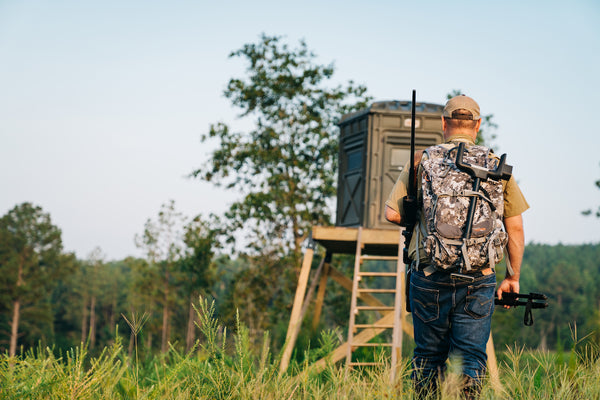Gearing Up for Deer Hunting Season
We’ve all been there. Your best buddy calls a few days out and invites you to the annual opening of deer season on his family property. As the weekend nears, you realize you don’t have the gear (or the license) to kick this hunt into high gear.
We get it.
Our team at Rear Precision Pod has put together a few essential tips for being prepared in advance of the next deer season. Make this a routine, and you’ll stand ready to hop in your truck when the next hunt calls.
1. Get your License (in Advance!)
If this is your first hunt, you’ll need to take the Hunter Safety Course for your state. This ensures you know the “ins and outs” of hunting safety when you’re in the field.
Pro tip: if you’re an experienced hunter, add a recurring note on your calendar (say, September 1st of each year) to mail in for the hunting licenses that you want for the year. The US Fish and Wildlife Service has links to every state office where you can order the license you need. Types of licenses vary based on if you are an in-state or out- of-state resident, how frequently you hunt, and the type of hunting that you’ll be doing.
Expect a few weeks to get your license back, unless you go to a brick and mortar store that sells licenses on the spot.
While you’re securing your license, make sure to check the regulations in the state where you’ll be hunting. Hunting rules can change from season to season, and from state to state. Opening days for hunts, as well as “bag limits'' can also vary from year to year.
2. Secure your Spot
When it comes to where you hunt, there’s private land, and there’s public land. We’ll dive into a few details about each:
- Private Land: Consider the use of private land a gift. Maybe it’s family land, or perhaps it’s a family friend’s acreage. Regardless, it’s important to show respect and care for the land both during (and after) hunting season. Maintain a relationship with the landowner by offering to do chores from time to time, help tend their food plot, and even share meat with the owner. These small gestures go a long way.
- Public Land: You’ll want to do your homework before you enter public lands. Check out online topographic maps and photos to get familiar with the terrain. Scope out the natural funnels, deer beds and escape routes. Also prepare for one of the biggest obstacles to any hunt: other hunters. Where are the edges of the hunting zone where other hunters may enter. Additionally, when you arrive on the public land, take note of any notices, ordinances, and additional maps on display that provide insight into the area you’re about to hunt.
3. Weapon Readiness
Pro tip: stock up on ammo early.
Next check your firearm. You’ll want to make sure there are no loose screws, and be sure to zero-in your gun from a distance that works for your type of hunting. A good rule of thumb is 100 yards. Additionally, weather can affect your accuracy so gauge for that variable as well.
Lastly, don’t forget about your knife. Make sure to sharpen it in advance of your hunt. Imagine taking down a buck, and then attempting to field dress the carcass with a dull knife!
4. The Stand
This is where your knowledge of scouting will come in handy again.
If you’re setting up a new treestand, make it as high as possible, and make sure you’re downwind of your target area to conceal your scent. Clear limbs and any debris to ensure a clean shot.
If you’re using an existing treestand, the old adage is: “send the biggest guy up to test it.” Essentially you want to make sure it’s still solid, secure and safe enough to hold you and your gear.
5. Survival Kit
This simple kit might be the most important tool you can bring on your hunt. After all, you have to (Scout theme again) “be prepared for anything.” Key items should include:
- Cell phone - make sure it’s charged (and if you’re going to be in a remote environment often, consider a remote satellite tracker).
- Lighter Headlamp or flashlight
- First aid supplies
- Emergency food rations
- Water purification system
- Map, compass or GPS
- Batteries
Learn More About Rear Precision Pod
We hope this list provides a solid checklist in advance of your next deer hunt. Before you know it, this routine will be second nature so you can focus on the thrill of the hunt every step of the way.
Be sure to check out our innovative Rear Precision Pod hunting application. It’s the perfect hunting accessory to improve accuracy, marksmanship and confidence when on your next deer hunt. Want to learn more about this incredible tool? Don’t hesitate to contact our team at Rear Precision Pod.

